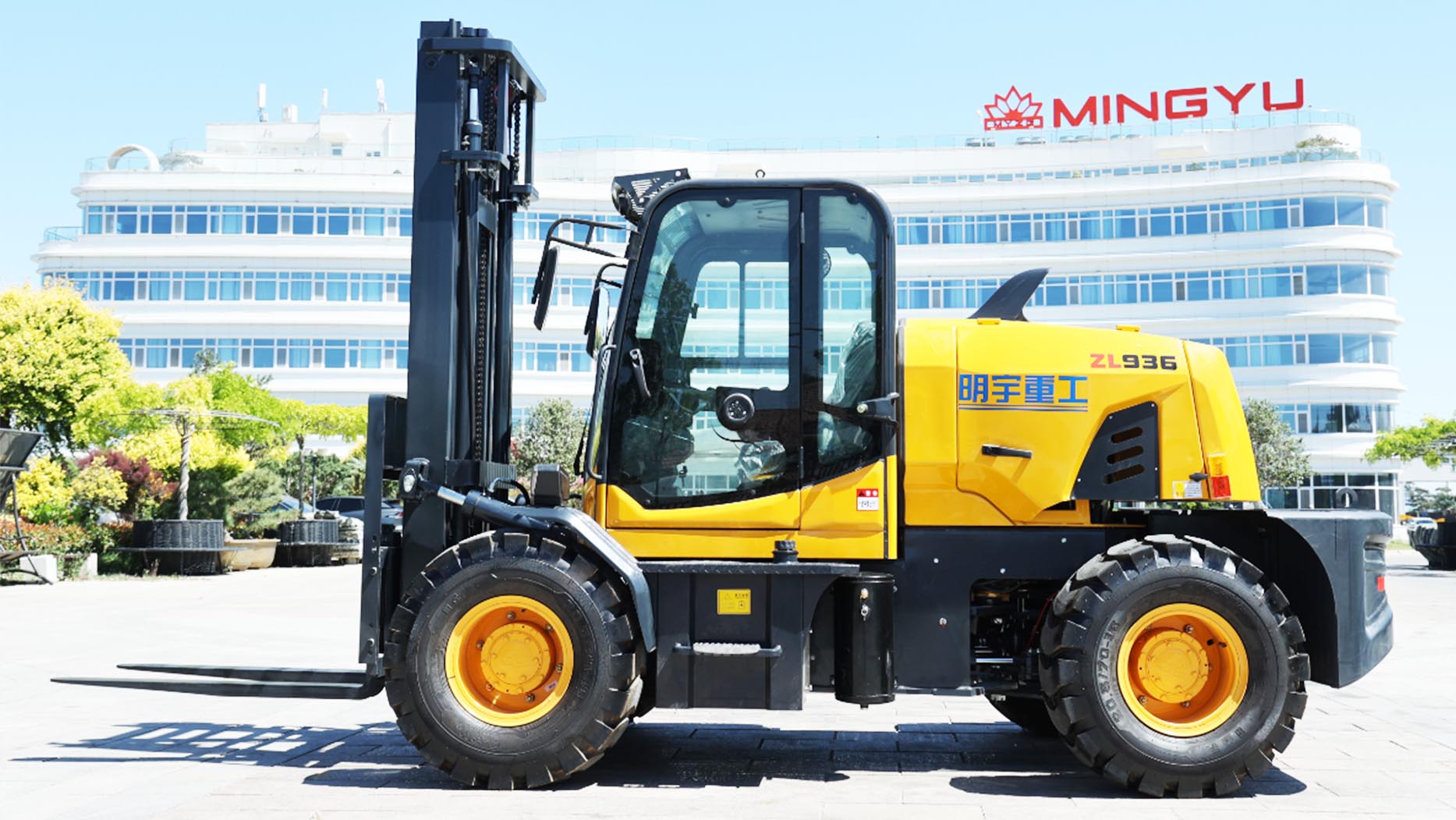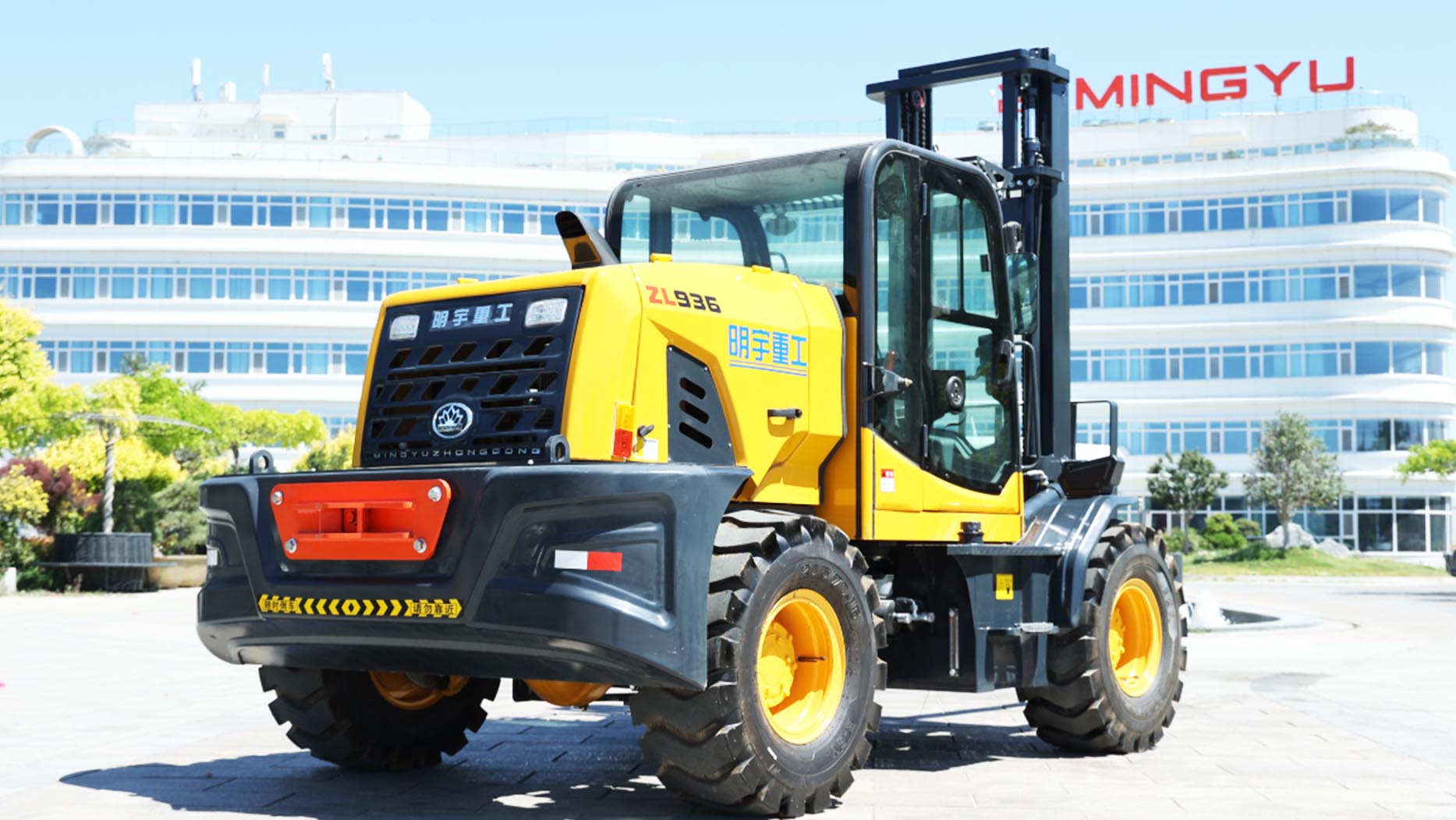At first glance, a forklift is a forklift, right? While both standard (or warehouse) forklifts and off-road forklifts share the fundamental purpose of lifting and moving materials, they are engineered for vastly different environments and applications. Understanding the core distinctions between these two types of material handling equipment is crucial for businesses to ensure they're using the right tool for the job, optimizing efficiency, enhancing safety, and making sound investment decisions.
A standard forklift, often seen meticulously navigating warehouse aisles, is built for precision and speed on smooth, flat surfaces. An off-road forklift, by contrast, is a rugged beast designed to conquer challenging terrains, making it indispensable on construction sites, farms, lumberyards, and other demanding outdoor environments. This article will delve into the fundamental differences that set these two categories apart, highlighting why each excels in its specific domain.
1. Operating Environment: The Defining Factor
The most significant differentiator lies in where these machines are designed to operate.
Standard Forklift (Warehouse Forklift):
Environment: Primarily designed for indoor use on flat, even, and often paved or concrete surfaces. Think warehouses, distribution centers, manufacturing plants, and retail spaces.
Design Philosophy: Focus on maneuverability in tight spaces, precision lifting, and efficiency on smooth floors.
Impact: Their smaller, solid, or pneumatic tires are optimized for grip and longevity on indoor surfaces, and their lower ground clearance facilitates stable operation and lower entry/exit points.
Off-Road Forklift (Rough Terrain Forklift):
Environment: Specifically engineered for rugged, uneven, unpaved, or outdoor terrain. This includes construction sites with dirt, gravel, or mud, lumberyards, farms, mining operations, and large outdoor industrial facilities.
Design Philosophy: Emphasis on stability, traction, power, and durability to navigate obstacles and challenging ground conditions.
Impact: Their design reflects this, from tire selection to chassis strength, ensuring they can operate effectively where standard forklifts would get stuck or tip over.

2. Drivetrain and Traction: Conquering the Ground
The way power is delivered to the wheels, and the wheels themselves, are vastly different.
Standard Forklift:
Drive: Typically 2WD (two-wheel drive), usually with front-wheel drive, as the primary need is for efficient movement on flat surfaces.
Tires: Often equipped with solid pneumatic or cushion tires.
Cushion Tires: Solid rubber, ideal for smooth, indoor concrete floors where puncture resistance and long wear are priorities. Offer less traction.
Pneumatic Tires: Air-filled rubber tires, providing more cushioning for operator comfort and some grip on slightly uneven surfaces, but still designed for controlled environments.
Ground Clearance: Relatively low ground clearance to maintain stability for indoor stacking and tight turning.
Off-Road Forklift:
Drive: Most commonly 4WD (four-wheel drive), providing superior traction and power distribution across all wheels. This is critical for navigating mud, sand, loose gravel, and steep inclines.
Tires: Feature large, wide, deep-tread pneumatic tires (often resembling tractor tires) designed for maximum grip and flotation on soft or uneven surfaces. Many are foam-filled for puncture resistance in debris-strewn environments.
Ground Clearance: Significantly higher ground clearance to prevent snagging on rocks, ruts, or other obstacles.
Axles: Often feature oscillating axles to ensure all wheels maintain contact with the ground on extremely uneven terrain, maximizing stability and traction.
3. Power Source and Engine Type: Reliability in Tough Conditions
The choice of power directly relates to the operating environment and performance demands.
Standard Forklift:
Power Sources: Can be electric (forklift electric), LP gas, gasoline, or, less commonly, small diesel engines.
Electric Forklifts: Increasingly popular for indoor use due to zero emissions, quiet operation, and lower running costs. Ideal for warehouses where air quality is a concern.
LP Gas/Gasoline: Offer good power and can be used in well-ventilated indoor spaces or outdoors.
Engine Design: Optimized for relatively consistent power output for indoor lifting and movement.
Off-Road Forklift:
Power Sources: Almost exclusively diesel forklift models.
Diesel Forklift: Diesel forklift engines provide the raw power, high torque, and durability needed for heavy lifting, continuous operation, and sustained performance in demanding outdoor conditions. They excel in pushing, pulling, and climbing with heavy loads.
Engine Design: Built to withstand extreme temperatures, dust, and continuous heavy loads, with robust cooling systems and air filtration. The power of a forklift 3 ton diesel or larger is often essential here.
 4. Chassis and Mast Design: Strength and Stability
4. Chassis and Mast Design: Strength and Stability
The structural integrity and lifting mechanisms are tailored to their respective roles.
Standard Forklift:
Chassis: Lighter, more compact chassis designed for stability on flat surfaces and maneuverability in tight aisles.
Mast: Masts are optimized for vertical stacking to considerable heights within confined indoor spaces, often with features like free lift for low-headroom areas.
Off-Road Forklift:
Chassis: Features a heavy-duty, robust, and often articulated or larger frame designed to handle twisting forces and shocks from uneven terrain and heavy, unbalanced loads. The counterweight is typically larger to enhance stability on slopes.
Mast: Masts are built for exceptional strength and stability, often with wider stances and heavier components to manage large, sometimes irregularly shaped, loads over rough ground. Lift heights might be slightly less extreme than specialized indoor reach trucks but are robust for high-stacking outdoors.
5. Operator Comfort and Features: Designed for the Task
While comfort is important for both, the focus shifts based on the environment.
Standard Forklift:
Comfort: Focus on ergonomic controls, small turning radius, and quiet operation (especially forklift electric models). Cabs may be open or partially enclosed.
Features: Often integrate sophisticated electronic controls, telematics for fleet management, and advanced safety sensors for indoor navigation.
Off-Road Forklift:
Comfort: Prioritizes operator protection from elements and rough rides. Often features fully enclosed cabs with HVAC (heating, ventilation, air conditioning) to shield against dust, rain, extreme temperatures, and noise. Suspended seats and robust suspension systems absorb shocks from uneven terrain.
Features: May include more powerful lighting for night operations on construction sites, robust ROPS/FOPS (Roll-Over Protective Structures/Falling Object Protective Structures) for operator protection, and simplified, robust controls that are easy to operate even with gloves on.
6. Specializations and Niche Products
Both categories have specialized variants, but some are unique to rough terrain.
Standard Forklift:
Reach Trucks, Order Pickers, Turret Trucks: Highly specialized indoor forklifts for very high-density storage and narrow aisles.
Manual Forklift: Simple hand pallet trucks or stackers for light, infrequent loads, purely indoor use.
Portable Forklift: This term can sometimes refer to light, hand-operated pallet jacks (manual forklift) that are easily moved. However, more typically, a portable forklift refers to a truck-mounted forklift or "piggyback" forklift, which is an offload forklift self loading onto the back of a delivery truck. These are designed to be transported with goods and then quickly offload them at a job site or remote location where a dock or traditional forklift might not be available. These bridge the gap between truck and ground in challenging environments.
Off-Road Forklift:
Telehandlers: While distinct, they share many rough-terrain characteristics and can function as forklifts with greater reach.
Truck-Mounted Forklifts (Portable Forklifts): As mentioned, these are a prime example of an off-road forklift variant designed for specific remote delivery applications, emphasizing self-sufficiency and all-terrain capabilities at the point of delivery.
 The Role of Manufacturers: MYZG and MINGYU
The Role of Manufacturers: MYZG and MINGYU
Manufacturers like MYZG and MINGYU (often referring to the same company, Mingyu Forklift, or similar Chinese manufacturers) play an important role in both segments, but particularly in making off-road forklifts more accessible. While major global brands offer a full spectrum, these manufacturers often provide competitive pricing for reliable diesel forklift models, including forklift 3 ton diesel variants and even compact mini forklift options that excel in challenging outdoor conditions. Their focus on robust construction and essential features makes them a strong choice for businesses seeking value in the tough terrain segment.
Choosing the Right Forklift for Your Operation
The decision between an off-road forklift and a standard forklift boils down to a clear understanding of your operational environment and material handling needs:
If your work is primarily indoors, on smooth surfaces, with an emphasis on tight aisle maneuverability and emission control, a standard forklift (especially an electric or LP model) is your choice.
If your work is mainly outdoors, on uneven, rugged, or unpaved terrain, involves heavy loads, and demands consistent power and stability in all weather, an off-road forklift (almost certainly a diesel forklift) is essential.
Attempting to use a standard forklift in an off-road environment will quickly lead to breakdowns, safety hazards, and inefficiency. Conversely, using an off-road forklift indoors would be overkill, less maneuverable, and potentially problematic due to emissions and size. By recognizing these fundamental differences, businesses can invest wisely in the specialized equipment that truly empowers their operations for maximum safety, efficiency, and productivity.
Post time:Jun.25.2025
